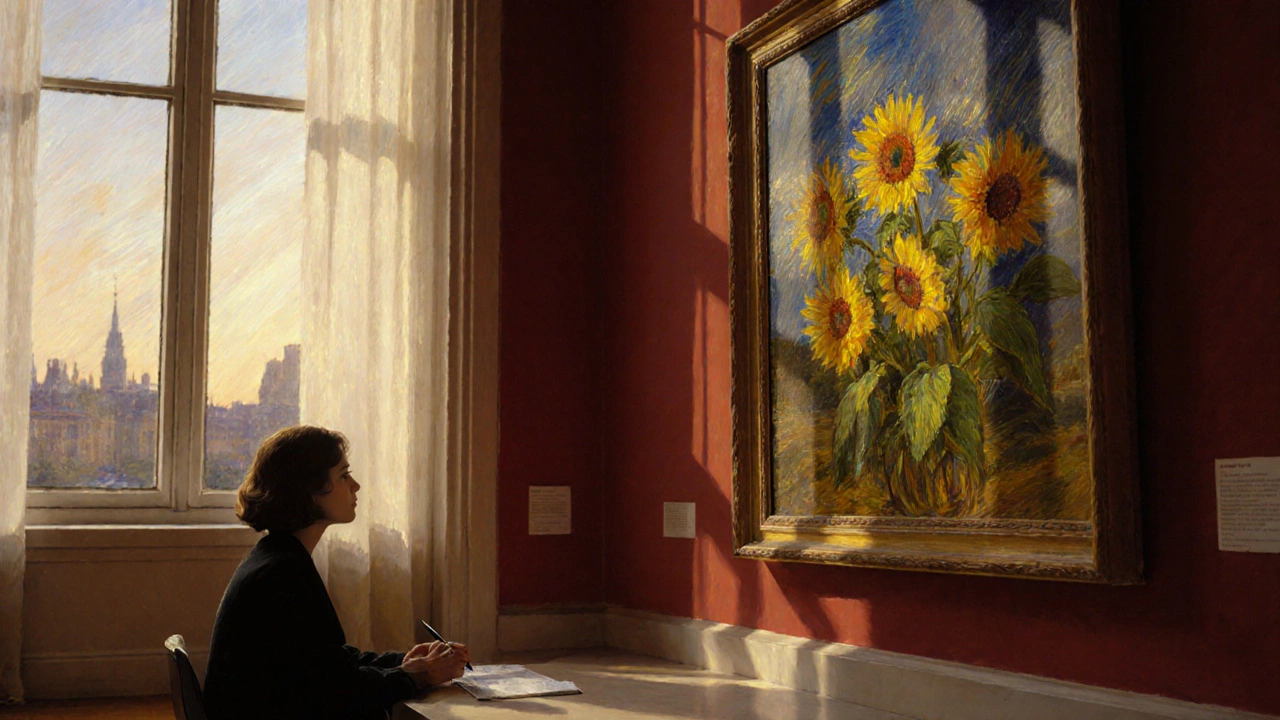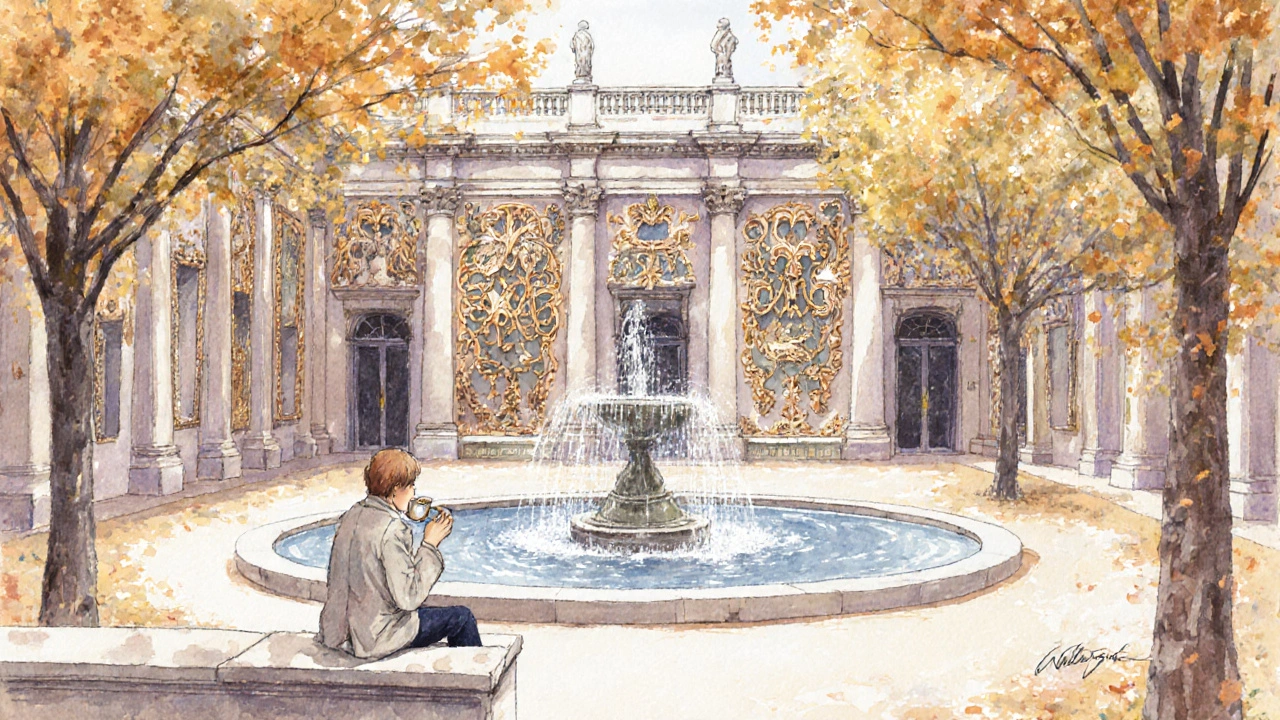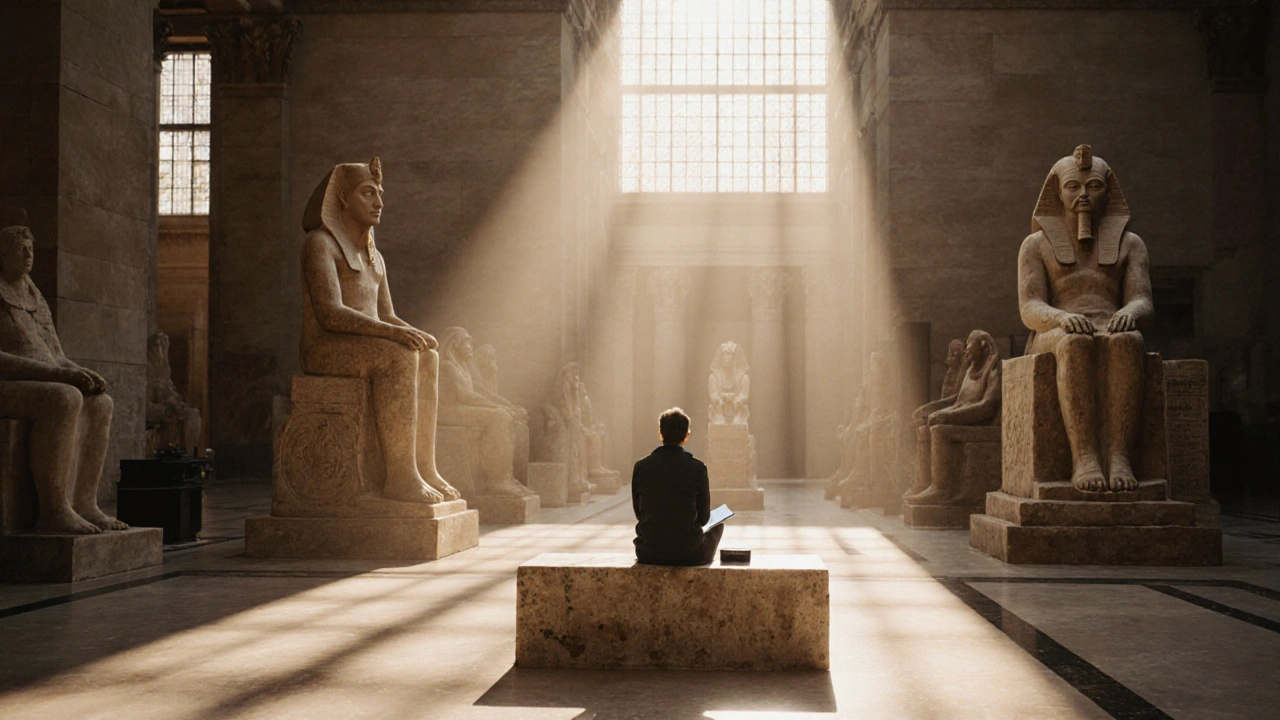London has over 170 free museums. That’s more than any other city in the world. But walking into the British Museum at 10 a.m. on a free entry day and trying to see everything before closing? You’ll leave exhausted, overwhelmed, and wondering why you didn’t just stay home. The secret isn’t seeing more-it’s seeing better. You don’t need to rush. You don’t need to check off every exhibit. You just need to pick one place, move slowly, and let the space breathe around you.
Choose One Museum, Not Three
Most people plan a free museum day by cramming in the British Museum, the National Gallery, and the V&A. That’s not a day. That’s a marathon with no water stops. Pick one. Seriously. One museum. If you’re into ancient history, go to the British Museum. If you love paintings, head to the National Gallery. If you’re curious about design, fashion, or furniture, the V&A is your spot. Each one has enough to fill a full day if you let it.
At the British Museum, you don’t need to see the Rosetta Stone, the Elgin Marbles, and every Egyptian mummy in one go. Walk in, find a quiet corner near the Greek sculptures, sit on a bench, and just look. Watch how the light hits the marble. Notice the cracks in the stone. Listen to the echoes in the hall. That’s how you remember it-not because you took 50 photos, but because you paused long enough to feel it.
Arrive Late, Stay Late
Free museums in London open at 10 a.m. That’s when the crowds roll in. Tour groups with clipboards, selfie sticks, and kids running between exhibits. Instead of joining them, arrive at 1 p.m. or later. The rush has passed. The lines at the cloakroom are gone. The galleries are quieter. You’ll have more space to move, more time to read the labels, and more chances to talk to a museum volunteer who might tell you a story no guidebook includes.
Stay until closing. Most people leave by 5 p.m. But if you stay until 6 or 7 (depending on the museum), you’ll get the golden hour. The lights dim slightly. The crowds thin. The place feels like it’s yours again. At the National Gallery, sit in front of Van Gogh’s Sunflowers as the afternoon sun fades. You’ll see details you missed at noon-the texture of the paint, the way the yellow almost glows.
Bring a Notebook, Not a Camera
Phones are great for capturing moments. But they’re terrible for remembering them. Instead of snapping ten pictures of the same painting, bring a small notebook. Write down one thing that caught your eye. Maybe it’s a soldier’s boot in a war painting. Maybe it’s the way a child’s hand is drawn in a 17th-century portrait. Sketch it if you can. Or just write: “The sadness in her eyes. Why?”
That note becomes your memory. Not a photo you’ll never look at again. A question. A feeling. A moment you didn’t just see-you thought about. At the Tate Modern, I once wrote: “The red chair in the corner. Why is it alone?” I still think about it two years later.
Take a Long Break-On Purpose
Most people treat museums like a checklist. Walk. Look. Walk. Look. Walk. Look. But museums are spaces designed for contemplation. They’re not theme parks. Take a real break. Not a 10-minute coffee stop. A 45-minute sit-down. Find a bench. Find a quiet room. Maybe it’s the Reading Room at the British Museum. Maybe it’s the café overlooking the Sculpture Garden at the V&A. Sit. Drink your tea. Watch people. Let your eyes rest.
At the Wallace Collection, there’s a small courtyard with a fountain. No one goes there. You can sit for 20 minutes, listen to the water, and feel like you’ve escaped the city. That’s the point. You’re not here to consume culture. You’re here to be changed by it.

Let Yourself Get Lost
Maps are helpful. But they’re also cages. Don’t follow the suggested route. Don’t click the museum app’s “Top 10 Must-Sees.” Walk in, turn left instead of right, and see where your feet take you. Museums are full of hidden corners. A quiet hallway with 18th-century porcelain. A room full of Roman coins you didn’t even know existed. A stained-glass window no one talks about.
At the Victoria and Albert Museum, I once wandered into a small room labeled “Textiles from the 1700s.” I had no interest in fabric. But the colors-deep indigo, faded gold-were so alive, I sat on the floor for 40 minutes. That became the highlight of my day. Not the big exhibits. The quiet one.
Don’t Feel Guilty About Leaving Early
You don’t have to see everything. You don’t even have to see half. If you’ve had enough after two hours? Leave. Walk to Hyde Park. Sit by the Serpentine. Watch the ducks. That’s part of the day too. Museums aren’t prisons. You’re not being graded. You’re not failing if you didn’t make it to the Assyrian wing.
Some of my best museum days ended with me walking out at 3 p.m., feeling full-not tired. I didn’t see 80% of the collection. But I saw one thing that stayed with me. And that’s enough.
What You’ll Remember
Five years from now, you won’t remember which gallery you visited first. You won’t remember the exact date. You won’t remember how many rooms you walked through.
You’ll remember the quiet moment. The painting that made you stop. The voice of the volunteer who told you about the artist’s last letter. The way the light fell on the marble floor. The tea you drank in silence. The notebook page with your shaky handwriting.
That’s what free museums give you-not a checklist. A pause. A chance to slow down in a city that never does.

Where to Go
Here are three museums that work best for a slow, quiet day:
- British Museum - Best for ancient history lovers. Go to the Egyptian Sculpture Court. Sit. Just sit. The quietest time is after 3 p.m.
- National Gallery - Best for art that moves you. Head to Room 34 for Van Gogh’s Sunflowers. It’s rarely crowded after 2 p.m.
- Wallace Collection - Best for hidden gems. Tiny, peaceful, no crowds. The French decorative arts room feels like stepping into a royal home.
Skip the big ones on weekends. Go on a weekday if you can. Tuesday and Wednesday are quietest. And always check opening times-some museums close early on certain days.
What to Bring
- A small notebook and pen
- Comfortable shoes (you’ll walk, but not as much as you think)
- A refillable water bottle (free water fountains are in most museums)
- A light jacket (museums are always cold)
- A single snack (no eating inside, but you can eat in the courtyard or garden)
Leave the backpacks at home. Most museums have lockers, but they’re often full. A small crossbody bag is enough.
What to Skip
- Audio guides (they rush you through)
- Group tours (they’re loud and fast)
- Trying to see everything
- Checking your phone every five minutes
- Feeling bad for not visiting the “famous” exhibit
Free doesn’t mean you have to perform. It means you get to be human.
Are all London museums really free?
Most major national museums in London-like the British Museum, National Gallery, Tate Modern, V&A, and Science Museum-are free to enter. Some special exhibitions charge a fee, but the permanent collections are always free. You’ll still need to book a timed entry slot for some museums, but it’s still free to reserve.
What’s the best day to visit for fewer crowds?
Tuesday and Wednesday are the quietest weekdays. Weekends are packed, especially during school holidays. If you can, avoid July and August-summer tourists flood the museums. Late September to early November is ideal: good weather, fewer crowds, and the light is softer.
Can I bring food into the museum?
No, you can’t eat inside the galleries. But nearly every museum has a café or a courtyard where you can sit and eat. The British Museum has a lovely garden. The V&A has a terrace. The Tate Modern has a rooftop terrace with a view of the Thames. Bring a sandwich and eat it outside-no one will mind.
Do I need to book tickets in advance?
For free entry, most museums don’t require tickets-but they do ask you to book a free timed slot online. This helps them manage crowds. Book it the night before or the morning of. It takes two minutes and saves you from waiting in line.
What if I get tired after an hour?
That’s completely normal. Museums are mentally exhausting. If you’re drained, leave. Walk to a park. Have a coffee. Come back later if you want. There’s no rule that says you have to stay all day. The best museum days aren’t the longest ones-they’re the ones where you left feeling calm, not drained.
Next Steps
Start small. Pick one museum. Pick one day. Don’t plan more than you can feel. Bring your notebook. Arrive after lunch. Sit down. Look. Don’t rush. Let the art, the history, the quiet-let it find you.
London’s free museums aren’t there to be conquered. They’re there to be felt.
